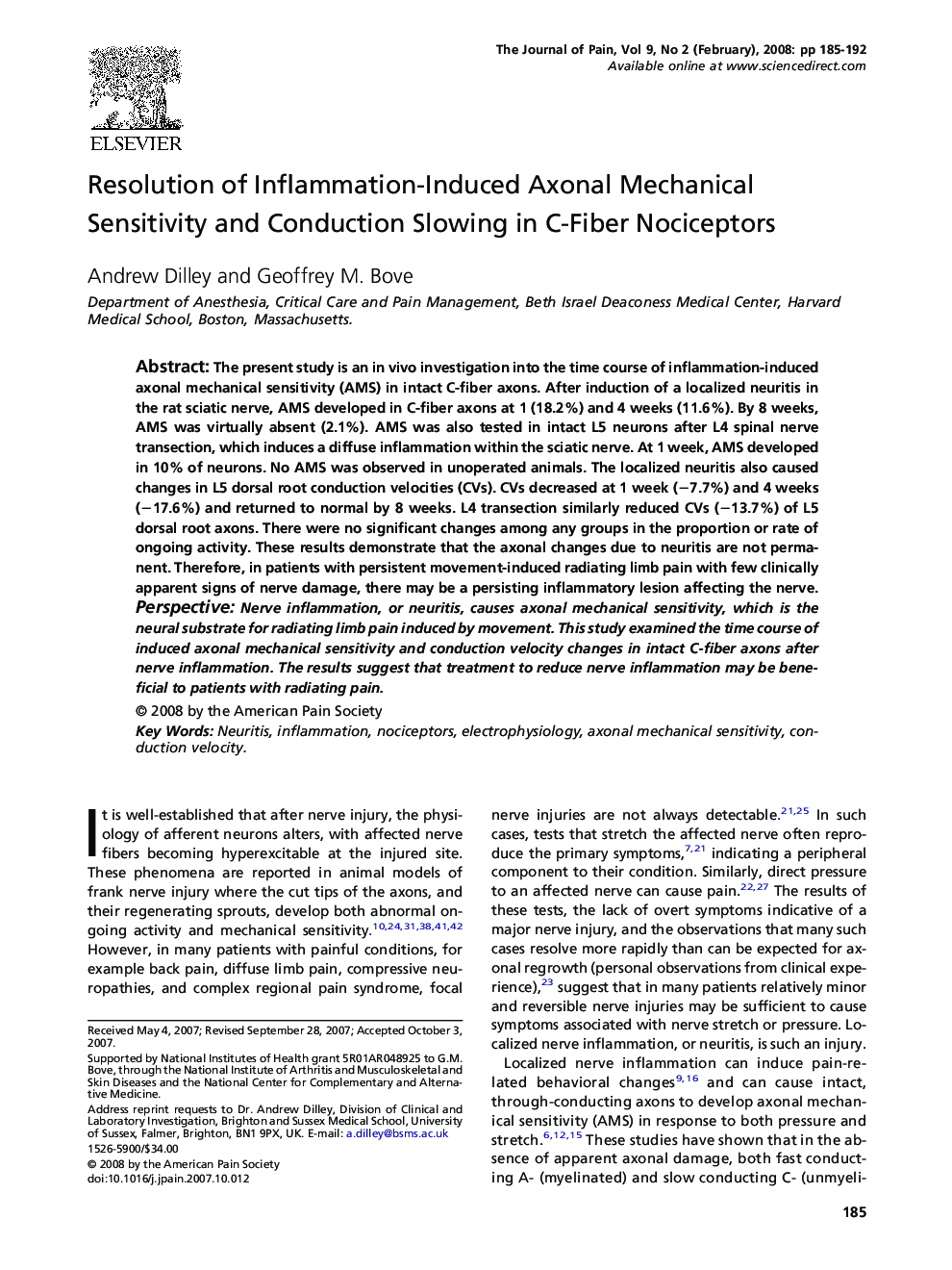| Article ID | Journal | Published Year | Pages | File Type |
|---|---|---|---|---|
| 2729321 | The Journal of Pain | 2008 | 8 Pages |
The present study is an in vivo investigation into the time course of inflammation-induced axonal mechanical sensitivity (AMS) in intact C-fiber axons. After induction of a localized neuritis in the rat sciatic nerve, AMS developed in C-fiber axons at 1 (18.2%) and 4 weeks (11.6%). By 8 weeks, AMS was virtually absent (2.1%). AMS was also tested in intact L5 neurons after L4 spinal nerve transection, which induces a diffuse inflammation within the sciatic nerve. At 1 week, AMS developed in 10% of neurons. No AMS was observed in unoperated animals. The localized neuritis also caused changes in L5 dorsal root conduction velocities (CVs). CVs decreased at 1 week (−7.7%) and 4 weeks (−17.6%) and returned to normal by 8 weeks. L4 transection similarly reduced CVs (−13.7%) of L5 dorsal root axons. There were no significant changes among any groups in the proportion or rate of ongoing activity. These results demonstrate that the axonal changes due to neuritis are not permanent. Therefore, in patients with persistent movement-induced radiating limb pain with few clinically apparent signs of nerve damage, there may be a persisting inflammatory lesion affecting the nerve.PerspectiveNerve inflammation, or neuritis, causes axonal mechanical sensitivity, which is the neural substrate for radiating limb pain induced by movement. This study examined the time course of induced axonal mechanical sensitivity and conduction velocity changes in intact C-fiber axons after nerve inflammation. The results suggest that treatment to reduce nerve inflammation may be beneficial to patients with radiating pain.
